15 years one-stop China custom CNC machining parts factory
 1300 |
Published by VMT at Sep 02 2024
1300 |
Published by VMT at Sep 02 2024
Lathe cutting tools are essential components in CNC machining, playing a crucial role in shaping, cutting, and finishing precision CNC machined parts. The selection of the right lathe cutting tool, based on the material, geometry, and specific application, significantly impacts the quality and efficiency of machining processes. In this comprehensive guide, we will explore the types, applications, geometry, and precautions associated with lathe cutting tools. Understanding these aspects will enable manufacturers, machinists, and engineers to make informed decisions, ensuring optimal performance in custom CNC machining and other precision machining operations.
A lathe is a versatile machine tool used in the manufacturing industry to perform a wide range of operations such as cutting, sanding, knurling, drilling, and turning. It works by rotating the workpiece around a stationary cutting tool, which removes material to shape the part to the desired specifications. Lathes are essential in producing CNC machined parts with high precision and accuracy. They are widely used in industries such as automotive, aerospace, electronics, and medical device manufacturing. The ability to handle various materials, including metals, plastics, and composites, makes lathes indispensable in custom CNC machining operations.
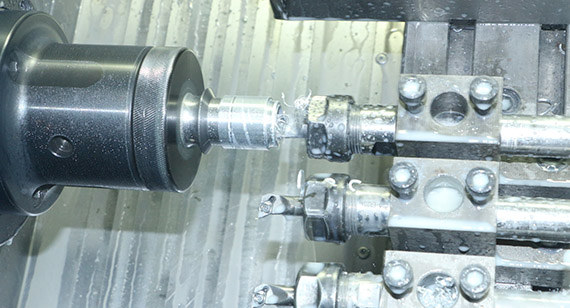
CNC lathes are available in several types, each designed to meet specific machining needs. The most common types include:
Flat Bed CNC Lathes: These lathes are characterized by their flat bed design, which offers greater flexibility and is suitable for larger workpieces. They are commonly used for general-purpose machining and can handle a wide range of materials and operations.
Slant Bed CNC Lathes: These lathes feature a slanted bed design, which provides improved chip removal and better ergonomics for the operator. Slant bed lathes are ideal for high-speed, high-precision machining, making them popular in industries that require precision CNC machined parts.
Swiss-Type CNC Lathes: Swiss-type lathes are designed for small, precision parts. They are known for their ability to produce intricate parts with tight tolerances, making them ideal for industries like medical device manufacturing and electronics.
Vertical CNC Lathes: Vertical CNC lathes are designed with a vertical spindle orientation. They are used for large, heavy workpieces that are difficult to mount on horizontal lathes. These lathes are commonly used in aerospace and automotive manufacturing.
Each type of CNC lathe has its own advantages and is selected based on the specific requirements of the machining task at hand.
Understanding the main parts of a lathe is essential for anyone involved in CNC machining. The key components of a lathe include:
Bed: The bed is the foundation of the lathe, providing support for all other components. It ensures stability and alignment during machining operations.
Headstock: The headstock houses the spindle, which rotates the workpiece. It also contains the gearbox and motor, which control the speed and torque of the spindle.
Tailstock: The tailstock is located opposite the headstock and provides support for the workpiece during machining. It can hold tools like centers, drills, and reamers.
Carriage: The carriage moves along the bed and holds the cutting tool. It is responsible for the longitudinal movement of the tool, allowing it to cut along the length of the workpiece.
Cross Slide: The cross slide sits on top of the carriage and allows for the lateral movement of the cutting tool, enabling precise control over the cutting depth.
Tool Post: The tool post holds the cutting tools and allows for quick tool changes during machining operations.
Chuck: The chuck is attached to the spindle and holds the workpiece securely in place during rotation.
Leadscrew: The leadscrew drives the carriage and cross slide, enabling the controlled movement of the cutting tool for threading and other precise operations.
These components work together to perform a wide range of machining tasks, from simple turning operations to complex CNC prototype machining.
Lathe cutting tools can be categorized into four main groups based on different criteria: material, operation, structure, and feed direction. Each category serves specific functions and is chosen based on the machining requirements.
Category 1: Lathe Cutting Tools Classified by Material
The material of a lathe cutting tool is a critical factor in determining its performance, durability, and suitability for different applications. The common materials used for lathe cutting tools include:
High Speed Steel (HSS): HSS tools are widely used in general-purpose machining. They offer good toughness, wear resistance, and heat resistance, making them suitable for cutting a variety of materials, including steel, aluminum, and plastics. HSS tools are also more affordable than other materials, making them a cost-effective option for many CNC machining services.
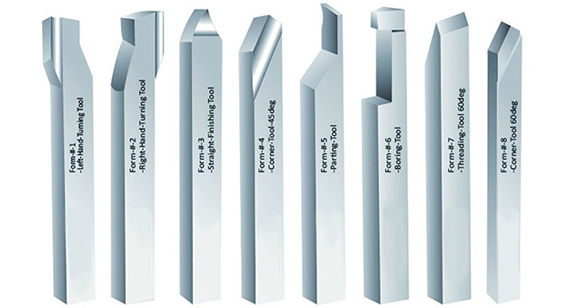
Carbide: Carbide tools are known for their hardness and ability to retain a sharp cutting edge at high temperatures. They are ideal for high-speed machining and are often used in applications that require precision and high productivity. Carbide tools are more expensive than HSS but offer longer tool life and superior performance in demanding conditions.
Diamond: Diamond tools are the hardest cutting tools available and are used for ultra-precision machining of non-ferrous materials such as aluminum, copper, and composites. They are also used for finishing operations where a superior surface finish is required. However, diamond tools are not suitable for machining ferrous metals due to the chemical reaction between diamond and iron at high temperatures.
Cubic Boron Nitride (CBN): CBN tools are second only to diamond in hardness and are used for machining hard ferrous materials, such as hardened steel and cast iron. CBN tools offer excellent wear resistance and are ideal for high-speed, high-precision machining operations.
Ceramic Products: Ceramic tools are used for high-speed machining of hard materials. They offer excellent heat resistance and can operate at higher cutting speeds than carbide tools. However, ceramic tools are brittle and can be prone to chipping or breaking under heavy loads or during interrupted cuts.
Category 2: Lathe Cutting Tools Based on Operation
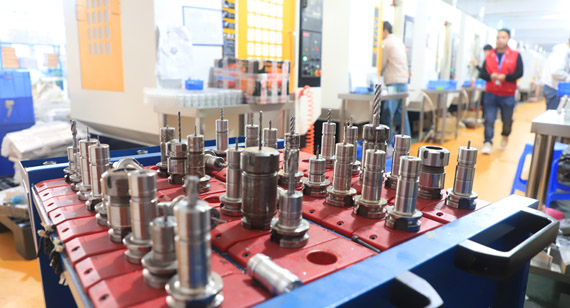
Lathe cutting tools can also be classified based on the specific operation they are designed to perform. Different operations require different tool geometries and cutting strategies:
Turning Tools: Turning tools are used to remove material from the outer surface of a workpiece to achieve the desired diameter. They are available in different types, including rough turning tools and finishing turning tools.
Rough Turning Tools: These tools are designed for removing large amounts of material quickly. They have a strong cutting edge and can withstand heavy cutting loads.
Finishing Turning Tools: These tools are used for final passes to achieve the desired surface finish and dimensional accuracy. They have a sharper cutting edge and are used at lower cutting speeds and feeds compared to rough turning tools.
Chamfering Tools: Chamfering tools are used to create beveled edges or chamfers on a workpiece. Chamfers are often used to remove sharp edges or to prepare parts for assembly.
Thread Cutting Tools: Thread cutting tools are used to create threads on the outer or inner surface of a workpiece. These tools are available in various profiles, depending on the type of thread being cut (e.g., metric, UN, Acme).
Facing Tools: Facing tools are used to machine the end face of a workpiece, creating a flat, smooth surface. Facing is often performed as a preliminary operation before other machining processes.
Forming Tools: Forming tools are designed to create specific shapes or profiles on a workpiece. These tools are used in applications where a precise geometric feature is required, such as grooves, radii, or complex contours.
Grooving Tools: Grooving tools are used to cut narrow channels or grooves on the surface of a workpiece. These tools are commonly used in applications such as creating O-ring grooves or retaining ring grooves.
Boring Tools: Boring tools are used to enlarge existing holes in a workpiece. They are commonly used in applications that require high precision and tight tolerances, such as CNC prototype machining.
Knurling Tools: Knurling tools are used to create a textured pattern on the surface of a workpiece, typically for improved grip or aesthetic purposes. Knurling is commonly used on handles, knobs, and other cylindrical parts.
Taper Turning Tools: Taper turning tools are used to create tapered surfaces on a workpiece. Tapers are commonly used in applications such as machine tool spindles, shafts, and mating parts that require a precise fit.
Category 3: Lathe Tools Classified by Structure
Lathe tools can also be classified based on their structure, which affects their versatility, ease of use, and cost:
Single Tools: Single tools are individual cutting tools that are mounted on the tool post one at a time. These tools are versatile and can be used for various operations, but tool changes can be time-consuming.
Welding Lathe Tools: Welding lathe tools have the cutting edge welded onto a steel shank. These tools are cost-effective and can be custom-made for specific applications. However, they are less durable than solid tools and may require frequent sharpening or replacement.
Clamping Lathe Tools: Clamping lathe tools use interchangeable inserts that are clamped onto the tool holder. These tools offer greater flexibility and cost savings, as only the insert needs to be replaced when worn. Clamping tools are widely used in CNC machining services due to their efficiency and ease of use.
Category 4 Class: Lathe Tools Classified by Feed Direction
The feed direction of a lathe tool determines the orientation of the cutting edge and affects the cutting operation:
Right-Hand Lathe Cutting Tools: Right-hand tools are designed to cut when moving from right to left across the workpiece. They are the most common type of lathe tools and are used for a wide range of operations.
Left-Hand Lathe Cutting Tools: Left-hand tools are designed to cut when moving from left to right across the workpiece. They are used in specific applications where the workpiece orientation or setup requires cutting in the opposite direction.
Round Nose Lathe Cutting Tools: Round nose tools have a rounded cutting edge and are used for general-purpose turning, facing, and profiling. They are versatile tools that can handle both roughing and finishing operations.
Selecting the right lathe cutting tool is crucial for achieving the desired results in CNC machining. Several factors must be considered:
Workpiece Materials and Features: The material of the workpiece, such as steel, aluminum, or plastic, will determine the type of cutting tool material and geometry required. Harder materials may require carbide or CBN tools, while softer materials can be machined with HSS tools.
Required Surface Finish and Tolerances: The required surface finish and dimensional tolerances will influence the choice of cutting tool geometry and operation parameters. Finishing tools with sharp cutting edges are preferred for achieving high-quality surface finishes.
Cutting Speeds, Feed Rates, and Depth of Cut: The cutting speed, feed rate, and depth of cut must be optimized based on the tool material, workpiece material, and desired outcome. Higher speeds and feeds are suitable for roughing operations, while lower speeds and feeds are used for finishing.
Machine Tool Capabilities and Limitations: The capabilities and limitations of the CNC lathe, such as spindle speed, power, and rigidity, must be considered when selecting cutting tools. Overloading the machine can result in poor surface finish, tool wear, and even machine damage.
Choosing the right lathe cutting tool involves evaluating several factors to ensure optimal performance:
Lathe Tool Coatings: Coatings such as titanium nitride (TiN) or aluminum oxide (Al2O3) can extend tool life and improve performance. Coated tools are ideal for high-speed machining and abrasive materials.
Workpiece Materials: The material of the workpiece will determine the best cutting tool material and geometry. For example, hard materials like hardened steel require tools with high hardness and wear resistance, such as carbide or CBN.
Type of Turning Operations Required: The specific turning operations, such as roughing, finishing, threading, or grooving, will influence the choice of cutting tool geometry and material.
Required Part Geometry: The complexity and precision of the part geometry will determine the type of cutting tool needed. Tools with specialized geometries may be required for intricate features or tight tolerances.
Computer-Aided Design (CAD) and Simulation: CAD and simulation tools can be used to optimize tool selection and machining parameters before actual production, reducing trial and error and improving efficiency.
Sensor Integration: Integrating sensors into the machining process can provide real-time feedback on tool wear, cutting forces, and other parameters, helping to optimize tool selection and performance.
Additive Manufacturing: Advances in additive manufacturing have made it possible to create custom cutting tools with complex geometries that are difficult to achieve with traditional manufacturing methods.
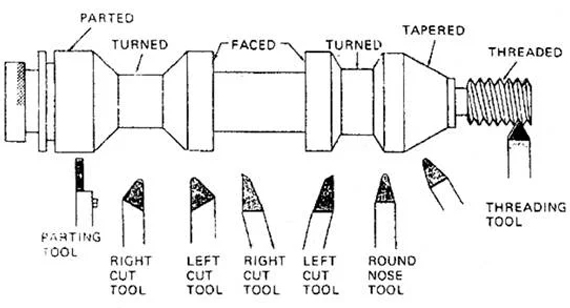
Lathe cutting tools have several key components that determine their performance and suitability for specific operations:
Shaft: The shaft is the main body of the tool that holds the cutting edge. It provides rigidity and stability during machining.
Face: The face of the tool is the surface where the chip forms as the material is removed. The geometry of the face affects chip formation and evacuation.
Flank: The flank is the surface of the tool that is adjacent to the workpiece. It provides clearance between the tool and the workpiece, preventing rubbing and reducing friction.
Leading Edge: The leading edge is the main cutting edge of the tool that engages with the workpiece. The geometry of the leading edge affects the cutting forces, tool wear, and surface finish.
Tip: The tip of the tool is the point where the leading edge meets the workpiece. It is critical for precision machining operations that require tight tolerances.
Rake Angle: The rake angle is the angle between the face of the tool and the workpiece surface. Positive rake angles reduce cutting forces and improve surface finish, while negative rake angles increase tool strength and stability.
Side Relief Angle: The side relief angle provides clearance between the tool flank and the workpiece, reducing friction and heat generation.
End Relief Angle: The end relief angle provides clearance between the tool tip and the workpiece, preventing rubbing and tool wear.
End Cutting Edge Angle: The end cutting edge angle affects the distribution of cutting forces along the cutting edge, influencing tool wear and surface finish.
Side Cutting Edge Angle: The side cutting edge angle affects the direction of chip flow and the distribution of cutting forces, impacting tool life and machining accuracy.
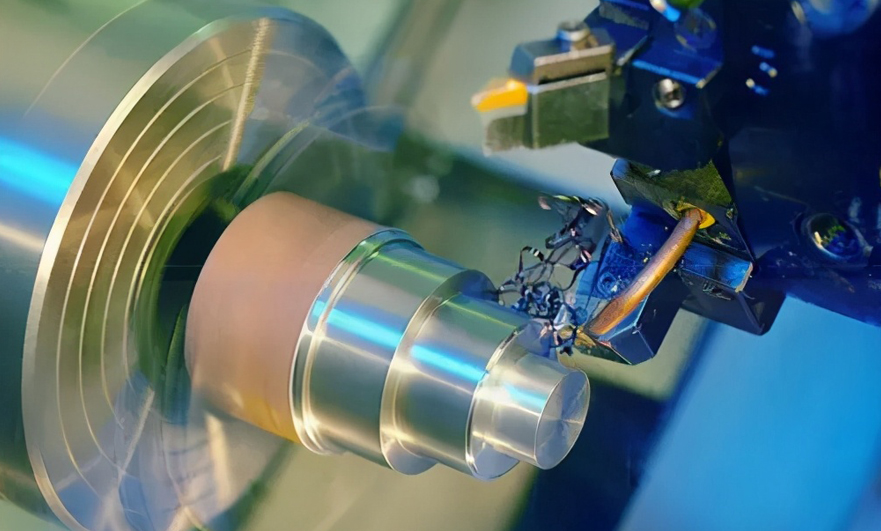
Lathe cutting tools can perform a wide range of operations, each requiring specific tools and techniques:
Turning Tool Operations: Turning is the most common operation performed on lathes. It involves removing material from the outer diameter of a workpiece to create a cylindrical shape. Turning tools are available in various geometries for roughing, finishing, and profiling operations.
Facing Operations: Facing involves machining the end face of a workpiece to create a flat surface. It is often used as a preliminary operation before other machining processes, such as drilling or boring.
Chamfering Operations: Chamfering creates a beveled edge on a workpiece, typically to remove sharp edges or prepare parts for assembly. Chamfering tools are available in various angles to achieve the desired bevel.
Knurling Operations: Knurling creates a textured pattern on the surface of a workpiece, typically for improved grip or aesthetic purposes. Knurling tools are available in different patterns, such as straight, diamond, or cross-hatch.
At VMT, we understand the importance of precision and quality in CNC machining. Our extensive range of lathe cutting tools and machining services are designed to meet the diverse needs of our customers, from prototype machining design to small batch CNC machining parts. With our state-of-the-art equipment and experienced team, we can handle complex machining tasks with ease, ensuring that your parts meet the highest standards of accuracy and performance.

Lathe cutting tools are critical components in CNC machining, directly impacting the quality, efficiency, and precision of the finished parts. Understanding the different types of lathe tools, their applications, geometry, and selection criteria is essential for achieving optimal results in any machining operation. Whether you are working with common materials like steel and aluminum or specialized materials like titanium and ceramics, choosing the right lathe cutting tool will ensure that your CNC machined parts meet the desired specifications.

What Are the Functions of Lathe Tools?
Lathe tools are used for various machining operations, including turning, facing, threading, chamfering, knurling, and more. Each tool is designed to perform a specific function, shaping and finishing the workpiece to the required specifications.
What Characteristics Should Be Considered Before Selecting Lathe Tool Materials?
When selecting lathe tool materials, consider factors such as the hardness of the workpiece material, the desired surface finish, cutting speed, tool life, and cost. The right material will balance these factors to achieve the best performance.
Which Cutting Tool Material Has the Highest Quality?
Diamond and cubic boron nitride (CBN) are considered the highest quality cutting tool materials due to their extreme hardness and wear resistance. However, the choice of material depends on the specific application and workpiece material.
What Are the Applications of Lathe Tools?
Lathe tools are used in a wide range of applications, including automotive, aerospace, medical device manufacturing, electronics, and general engineering. They are essential for producing precision CNC machined parts with high accuracy and surface quality.
What Is the Difference Between Right-Handed and Left-Handed Lathe Cutting Tools?
Right-handed tools cut when moving from right to left across the workpiece, while left-handed tools cut when moving from left to right. The choice depends on the direction of the cut required by the machining operation.
Can the Same Lathe Tool Be Used for Different Materials?
While some lathe tools can be used for multiple materials, it is generally best to select tools specifically designed for the material being machined. This ensures optimal performance and tool life.
What Is the Significance of the Feed Direction of Lathe Tools?
The feed direction determines the orientation of the cutting edge and affects the cutting operation's effectiveness. Choosing the correct feed direction is essential for achieving the desired surface finish and dimensional accuracy.
What Are the 5 Types of Lathe Tools?
The five common types of lathe tools include turning tools, facing tools, threading tools, chamfering tools, and grooving tools. Each type is designed for specific machining operations.
What Types of Cutting Tools Are Used on Lathes?
Cutting tools used on lathes include HSS tools, carbide tools, diamond tools, CBN tools, and ceramic tools. Each material offers unique properties suited to different machining tasks.
This comprehensive guide provides valuable insights into lathe cutting tools, helping you make informed decisions in your CNC machining projects. By understanding the types, applications, and selection criteria, you can optimize your machining processes, ensuring the highest quality and precision in your work.
